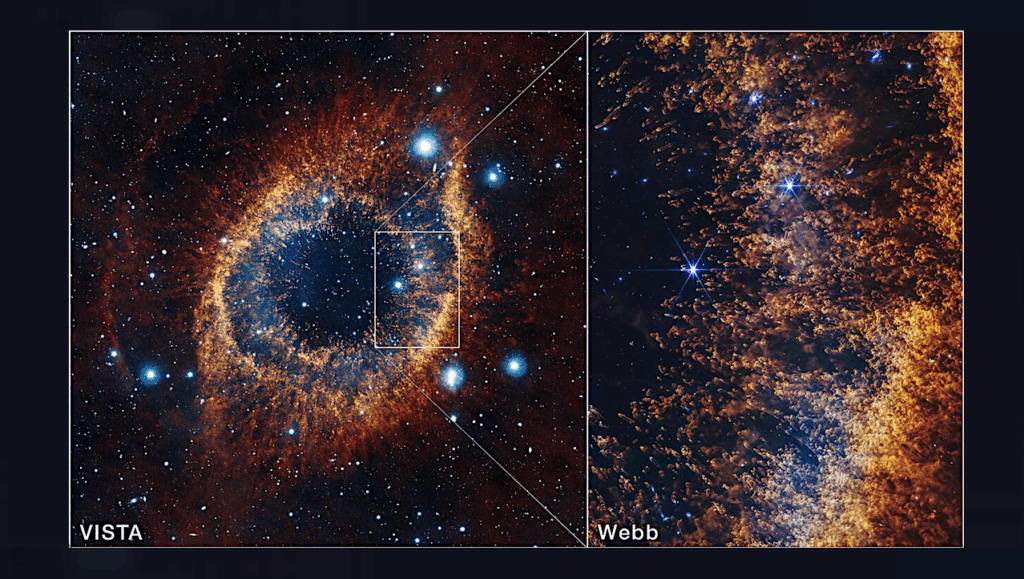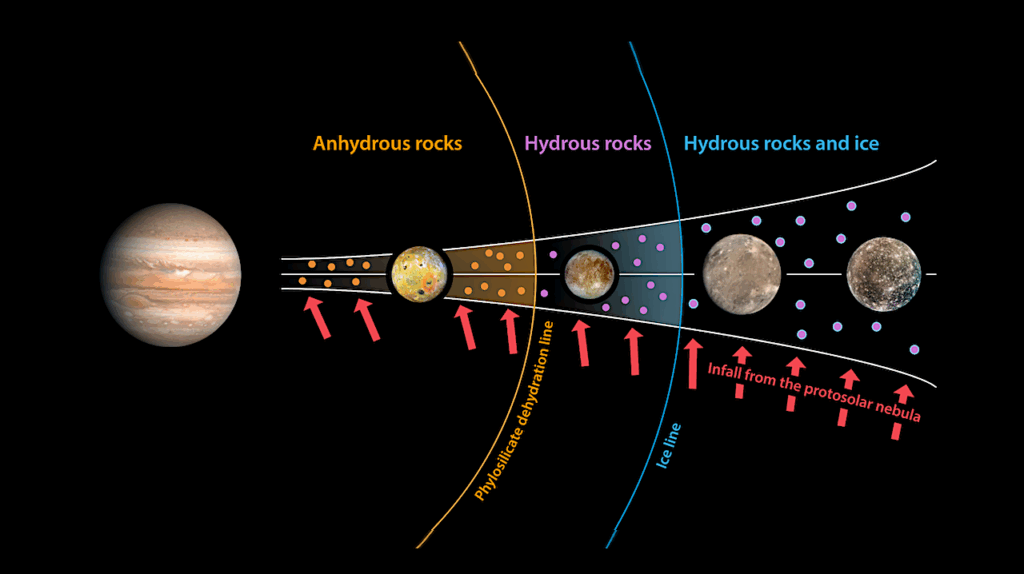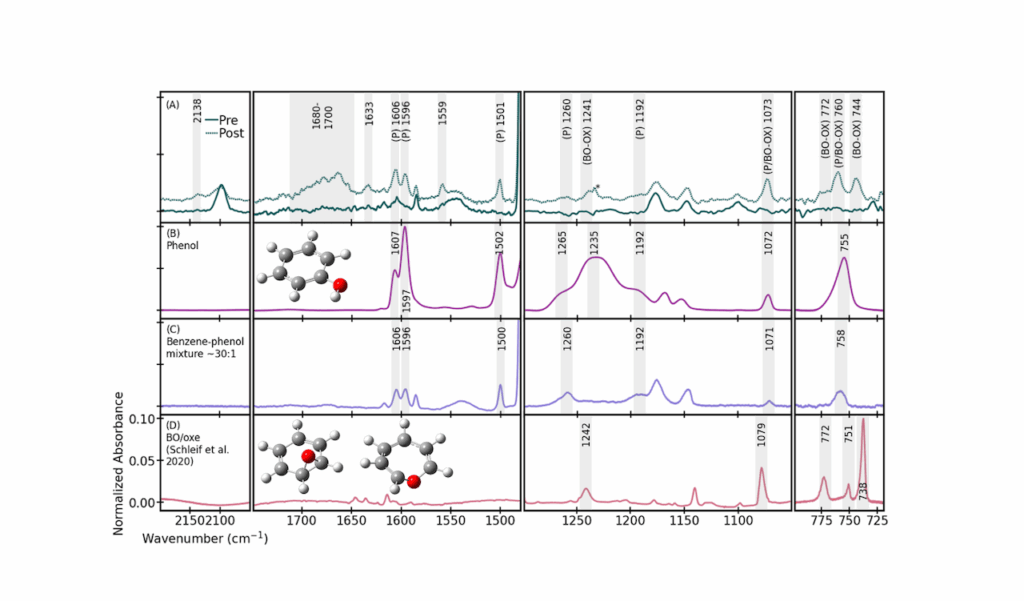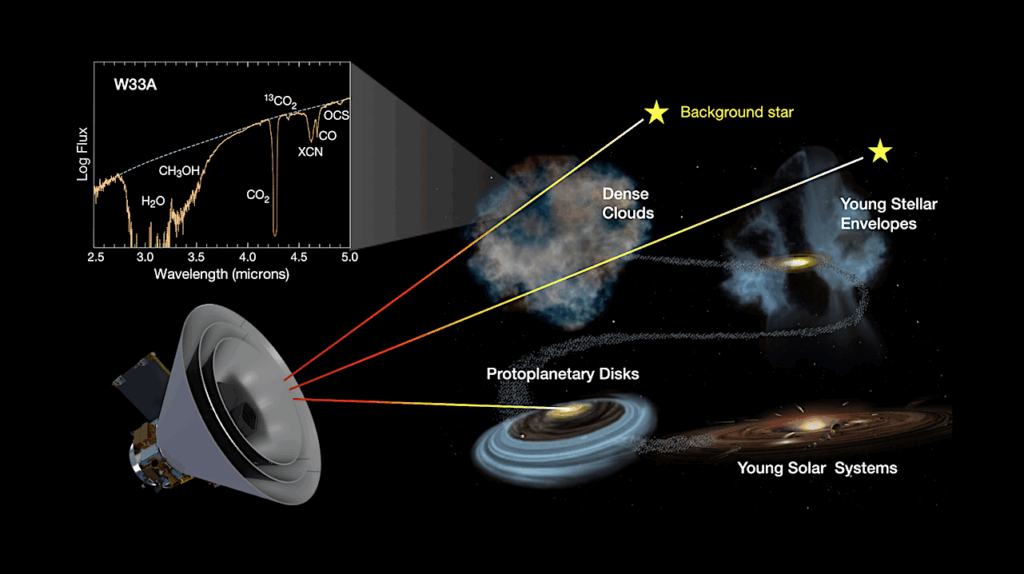Detection of Cosmic Fullerenes in the Almahata Sitta Meteorite: Are They an Interstellar Heritage?
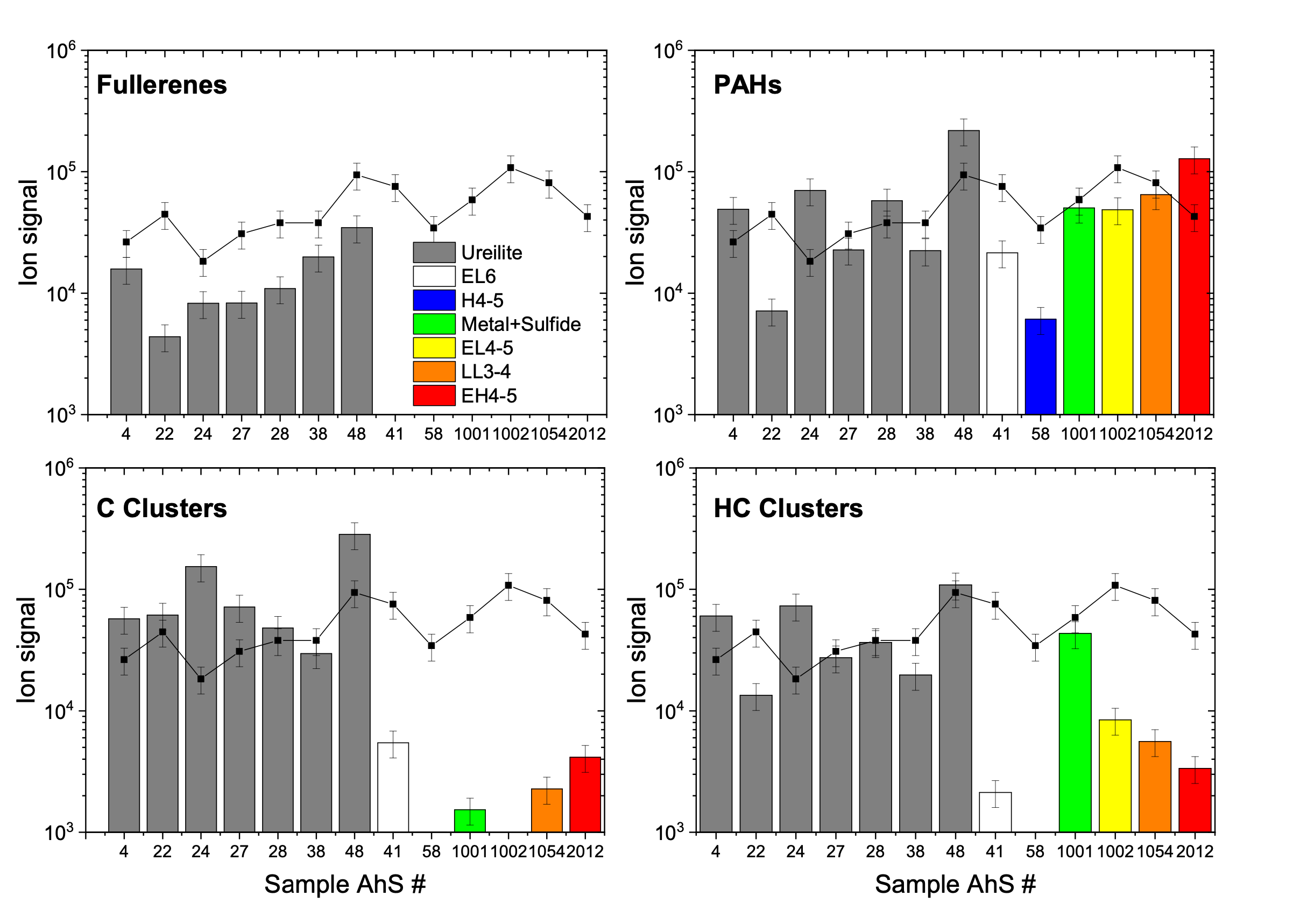
Buckminsterfullerene, C60 , is the largest molecule observed to date in interstellar and circumstellar environments. The mechanism of formation of this molecule is actively debated. Despite targeted searches in primitive carbonaceous chondrites, no unambiguous detection of C60 in a meteorite has been reported to date.
Here we report the first firm detection of fullerenes, from C30 to at least C100 , in the Almahata Sitta (AhS) polymict ureilite meteorite. This detection was achieved using highly sensitive laser desorption laser ionization mass spectrometry. Fullerenes have been unambiguously detected in seven clasts of AhS ureilites.
Molecular family analysis shows that fullerenes are from a different reservoir compared to the polycyclic aromatic hydrocarbons detected in the same samples. The fullerene family correlates best with carbon clusters, some of which may have been formed by the destruction of solid carbon phases by the impacting laser.
We show that the detected fullerenes are not formed in this way. We suggest that fullerenes are an intrinsic component of a specific carbon phase that has yet to be identified. The nondetection of fullerenes in the Murchison and Allende bulk samples, while using the same experimental conditions, suggests that this phase is absent or less abundant in these primitive chondrites.
The former case would support the formation of fullerenes by shock-wave processing of carbonaceous phases in the ureilite parent body. However, there are no experimental data to support this scenario. This leaves open the possibility that fullerenes are an interstellar heritage and a messenger of interstellar processes.
Hassan Sabbah (IRAP), Mickaël Carlos (IRAP), Peter Jenniskens (SETI), Muawia Shaddad, Jean Duprat (IMPMC_COSMO), Cyrena Goodrich (LPI), Christine Joblin (IRAP)
Subjects: Astrophysics of Galaxies (astro-ph.GA); Instrumentation and Methods for Astrophysics (astro-ph.IM)
Cite as: arXiv:2208.10122 [astro-ph.GA] (or arXiv:2208.10122v1 [astro-ph.GA] for this version)
https://doi.org/10.48550/arXiv.2208.10122
Focus to learn more
Journal reference: The Astrophysical Journal, American Astronomical Society, 2022, 931 (2), pp.91
Related DOI:
https://doi.org/10.3847/1538-4357/ac69dd
Focus to learn more
Submission history
From: Christine Joblin [via CCSD proxy]
[v1] Mon, 22 Aug 2022 07:49:41 UTC (1,023 KB)
Full paper: https://arxiv.org/abs/2208.10122
Astrobiology, Astrochemistry,


